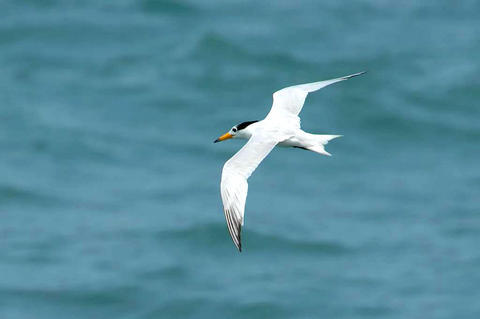
Chinese Crested Tern
Image Credit: Liao Pen-Hsing, Taipei Times
Below is a link and an exerpt on the state of birds in China. The article points out the need for habitat conservation and cultural changes that need to be implemented in China to save its birds.
The Loneliness of the Chinese Birdwatcher
China is not a good place to be a bird. I learnt this when I moved from Hong Kong, still a British colony, to Beijing. Though my home in Hong Kong was in the heart of the city, dense scrub tumbled down the slopes from the Peak. I was driven out of bed every morning by a raucous dawn chorus. The violet whistling thrush was among the first to start up, and the hwamei (“beautiful eyebrow”), with white eyestripe and rich territorial song. The koel, a tropical cuckoo that lurks in thick cover, has a rising bisyllabic wolf-whistle. The grey treepie, a corvid, was a late riser, but hoodlum gangs soon made up for it. Layered over the top of all this came the screeches of sulphur-crested cockatoos. These aerial zoomers were a feral flock. The oldest had short lengths of chain on their legs and were released in 1941 from the aviary at Flagstaff House as the Japanese army closed in.
In my hutong neighbourhood in Beijing, by contrast, the mornings were strangely silent. In 1958 Mao Zedong had declared war on songbirds, sparrows in particular: he claimed they consumed scarce grain. For three days and nights my neighbourhood, gripped like much of northern China by hysteria, had beaten pots and pans to keep birds on the move until they collapsed in exhaustion on the roofs and pavements of the courtyard houses. The consequence was a plague of locusts the next year that helped bring on a famine. “Suan le,” Mao had said when told that the anti-sparrow campaign was not working. “Forget it then.”
Read the full artile in the Economist




